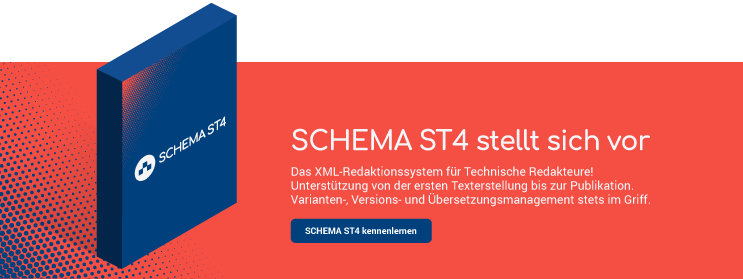Is a Component Content Management System Worthwhile?
If you’re thinking about introducing a component content management system (CCMS), you will of course want to know whether it’s worthwhile. An ROI (return on investment) analysis is an important supporting argument for convincing the management team to get on board. But how do you arrive at meaningful numbers? We show you the most important steps.

Procedure
There is a typical process for most content management system implementation projects. First (1) the initial situation has to be recorded, then (2) the optimization potentials must be identified. In this second phase at the latest, the profitability analysis and thus the ROI also become important. After that (3) a target state has to be defined and last but not least (4) the system is selected.
There are several aspects to be considered in terms of the initial situation (1). Of course, it’s important to know which tools have been used so far. However, the processes that are carried out in the technical writing department are at least as important. These not only include the processes for creating the manual itself, but also the processes associated with translation or creating evaluations, for example. Finally, another aspect when analyzing the initial situation is how the existing tools and processes are integrated into the company IT system. For example, are data retrieved from PIM manually, via an Excel interface, or in an automated manner?
When identifying optimization potential (2), it is important to keep the entire situation in the technical writing department in mind. This means that all information products, all processes, all publications, all translations, and all automations should be examined for their potential for improvement. These optimization potentials must be contrasted with the risks, e.g., what will happen to the technical writing department in the short or medium term if a CMS is dispensed with. Or, what resources or expertise are required for the changeover? Migration of the existing data is also a source of risk.
ROI Analysis
Quanos can support you in defining the target state (3) in a variety of ways, such as through contact with reference customers, trial installations, customer-focused supplier presentations, or through consulting and training. This allows you to build up an accurate picture of how your technical writing team wants to work in the future. Nothing more stands in the way of introducing the system. In fact, a system can be successfully introduced very quickly, especially if you choose a standard system such as SCHEMA ST4 and do without special customizations. Usually it only takes a few weeks from system implementation to starting work on live technical writing tasks in the CMS.
So far, so good! But how do you carry out a cost-benefit analysis (2)? Well – the cost side is easy to determine because the system provider will tell you. You counter this cost side with the savings you are counting on. Of course, at the moment you don’t know exactly which savings will actually materialize in practice. Therefore, it makes sense to plan with one optimistic and one conservative scenario for the optimization estimates.
The savings measure is personnel costs, which relate to working time. Break down these savings into the most important day-to-day technical authoring activities, i.e., research, content creation, organizing translations, and layout tasks. For each activity block, this results in estimates of the previous working times and estimates for the work on these activity blocks using the component content management system. If you now plot the costs of the component content management system and the savings for activities against each other on a monthly basis, you will have a chart that you can use to clearly determine (and demonstrate) if and when an ROI will be achieved.
Practical Experience
It goes without saying that where you can achieve which savings by using a CMS depends on your current working environment and the other framework conditions in your technical writing department. One area where you can typically optimize a great deal is typesetting and layout tasks (both for the source documents and in the various translations). Since in a CMS the layout is generated automatically, the effort required here is close to zero. Many improvements can also be made in relation to other activities, such as handling translations. For a system with five workstations and integrated workflows, the return on investment is typically achieved within nine to ten months. But no matter when the ROI actually materializes, one thing is for sure – it is always achieved in practice.
Other articles from Quanos
This might also interest you

„Doku-Lounge“: Auf dem roten Sofa mit Kerstin Berke und Philipp Eng
Moderatorin Kerstin Berke und Marketingspezialist Philipp Eng sind das Duo vor und hinter dem Mikro der „Doku-Lounge“…
